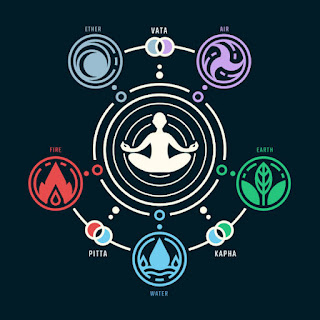The Role of Breath in Awakening Higher States of Consciousness
How Breathwork Awakens Higher States of Consciousness: A Complete Guide
The breath is a powerful, often overlooked tool that connects the body, mind, and spirit. In spiritual traditions around the world, breathwork is revered for its ability to unlock deeper states of consciousness, calm the mind, and facilitate spiritual awakening. The way we breathe can significantly influence our physical and mental well-being, but it also holds the key to higher spiritual experiences. By learning to harness the power of breath, we can awaken to deeper levels of self-awareness and transcend ordinary reality. This article explores seven key roles of breath in the journey toward higher consciousness.
Regulating the Nervous System
Breathwork serves as an effective way to regulate the nervous system, which is crucial for achieving a higher state of consciousness. Our breath is intimately connected to the autonomic nervous system, which has two main branches: the sympathetic (fight-or-flight) and the parasympathetic (rest-and-digest) systems. By consciously controlling our breathing, we can shift from a state of stress or hyperarousal to one of calm and relaxation, creating the ideal environment for spiritual awakening.
Techniques such as deep diaphragmatic breathing activate the vagus nerve, which promotes parasympathetic activity. This calms the mind, reduces anxiety, and paves the way for meditation and inner exploration. For example, practicing 4-7-8 breathing—inhaling for four counts, holding the breath for seven counts, and exhaling for eight counts—can instantly shift your body into a relaxed state. This kind of breathwork is a foundational practice that primes the mind for deeper spiritual work.
When the nervous system is in a state of equilibrium, it becomes easier to access higher states of consciousness. The mental chatter subsides, and a sense of profound inner peace emerges, creating a gateway to transcendental experiences.
Accessing the Subconscious Mind
Our breath can also act as a key to unlock the subconscious mind. Breathwork techniques like holotropic breathworkand rebirthing breathwork use rhythmic, accelerated breathing to access altered states of consciousness. These techniques can lead to experiences that resemble deep trance states, where the boundaries between the conscious and subconscious mind blur.
In these altered states, buried memories and emotions often come to the surface, allowing for cathartic release and personal healing. The subconscious mind is a reservoir of our past experiences, beliefs, and emotions that influence our behavior. By tapping into it through breath, we can gain insights into patterns and traumas that we were previously unaware of.
The act of consciously breathing through these experiences helps to dissolve emotional blockages and clears the path for spiritual growth. As the subconscious releases old, limiting beliefs, there is more space for new, expansive perspectives to emerge, facilitating personal transformation and spiritual awakening.
Energy Activation and Kundalini Awakening
Breathwork plays a vital role in the activation of prana, or life force energy, within the body. In yogic philosophy, prana is the vital energy that flows through our body’s energy channels, or nadis. Specific breath techniques are designed to awaken and channel this energy, particularly when it comes to the awakening of Kundalini energy—a powerful spiritual force said to lie dormant at the base of the spine.
Practices such as Kapalabhati (Breath of Fire) and Bhastrika (Bellows Breath) generate heat and activate this dormant energy, which then rises through the chakras, or energy centers, along the spine. This can lead to experiences of heightened awareness, mystical visions, or even a sense of merging with the divine. However, Kundalini awakening should be approached with care and respect, as the energy is potent and can cause intense physical and emotional experiences.
The activation of energy through breath can also open and balance the chakras, allowing for a free flow of energy that enhances one’s spiritual awareness. When prana flows unhindered, the mind becomes more focused and attuned to the higher spiritual dimensions of existence.
Expanding Awareness and Presence
One of the simplest yet most profound uses of breath is its ability to anchor us in the present moment. In many meditation practices, the breath serves as a focal point to cultivate mindfulness. By paying attention to the natural flow of the breath, practitioners can achieve a state of heightened awareness and deep presence.
Anapanasati, or mindfulness of breathing, is a classic technique used to develop insight and awareness. By observing each inhalation and exhalation without trying to control them, the mind gradually becomes still. In this stillness, a profound sense of awareness emerges, revealing the interconnectedness of all things. This expanded awareness is often the first step toward experiencing higher states of consciousness.
As we learn to be fully present with our breath, we can become more attuned to the subtleties of existence, from the sensations within our bodies to the energy that surrounds us. This deep sense of presence can lead to moments of spiritual insight, where we experience life in a more vibrant, connected way.
Connecting with Universal Consciousness
Breathwork has the potential to dissolve the illusion of separation between the individual self and the universe, leading to experiences of unity and oneness. This is often described as a feeling of merging with the Universal Consciousness or experiencing a state of non-duality. Techniques like Sama Vritti (Equal Breathing) and Nadi Shodhana (alternate nostril breathing) are particularly effective for balancing the left and right hemispheres of the brain, harmonizing logic and intuition.
When these hemispheres are in balance, a sense of wholeness arises, allowing for an experience of the interconnected nature of reality. This state of unity is described in various spiritual traditions as a realization of our divine essence. The breath becomes a conduit through which we connect with this higher reality, transcending the ego and experiencing pure, unbounded consciousness.
By practicing breathwork regularly, one can experience moments of spiritual bliss and deep, unwavering peace, where the sense of being a separate entity dissolves into an awareness of being one with all existence.
Purification and Detoxification
Another essential role of breathwork is purification. Physically, breath detoxifies the body by expelling carbon dioxide and other toxins through the respiratory system. Each exhalation is a release of waste, while each inhalation nourishes the body with fresh oxygen. On a symbolic level, this purification process extends to the mind and spirit.
Techniques like Ujjayi breath (Victorious Breath) help clear energy blockages and release stagnant emotions. When practiced regularly, Ujjayi breath purifies the mind of negative thought patterns, creating a clearer, more receptive state for spiritual exploration.
Detoxifying the body and mind prepares us for higher states of awareness. Just as a cluttered room can be distracting, a body and mind full of toxins and emotional debris can hinder spiritual growth. By purifying the body with intentional breathwork, we clear the space needed for deeper, more meaningful experiences of consciousness.
Facilitating Deep Meditation and Inner Stillness
The breath is a powerful tool for facilitating meditation. Focusing on the breath is one of the simplest ways to enter a state of inner stillness. By observing the natural flow of breath, we can calm the mind’s restless activity and settle into a deeper meditative state. This is essential for experiencing Samadhi, the state of meditative absorption described in yogic philosophy.
The breath serves as a gentle guide, leading the practitioner into deeper levels of consciousness. As the mind quiets, the breath naturally becomes slower and more subtle, reflecting an inner state of tranquility. In this stillness, profound realizations can occur, and the boundaries between the self and the universe can dissolve.
Achieving this state of inner peace is a foundational step for spiritual awakening. The insights gained in these moments of deep meditation can be life-changing, offering a glimpse into the true nature of reality and our place within it.
The breath is far more than a mere physiological function; it is a sacred tool that can lead us to profound spiritual experiences and higher states of consciousness. By learning to harness the power of breath, we can regulate our nervous system, access the subconscious mind, activate energy centers, and connect with Universal Consciousness. As we practice intentional breathwork, we purify our body and mind, anchor our awareness in the present moment, and enter deeper states of meditation. Ultimately, the breath serves as a bridge between the material and spiritual worlds, guiding us toward awakening and self-realization.
Whether you are new to breathwork or an experienced practitioner, the breath remains a constant companion on the path to spiritual growth. Through dedicated practice, you can transform your consciousness and experience the profound unity that lies at the heart of existence.











